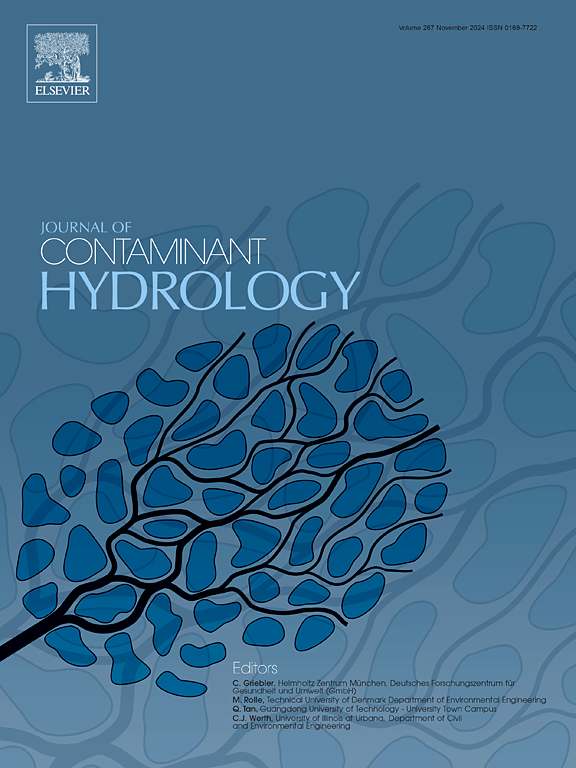太阳能电絮凝可持续去除地下水硝酸盐的综合环境经济优化。
IF 4.4
3区 环境科学与生态学
Q2 ENVIRONMENTAL SCIENCES
引用次数: 0
摘要
本研究探讨了使用机器学习(ML)模型——线性回归(LR)、支持向量回归(SVR)、梯度增强(GB)、k近邻(KNN)、随机森林(RF)、人工神经网络(ANN)、多层感知器回归(MLPR)和决策树(DT)——来优化和预测电凝(EC)过程中去除地下水硝酸盐(NO3-)的能耗。除了这些数据驱动的方法,响应面方法(RSM)与Box-Behnken设计(BBD)被应用于统计评估操作参数。其中,GB模型表现最佳,R2 = 0.9924,均方误差(MSE) = 0.0135,均方根误差(RMSE) = 0.1164,平均绝对百分比误差(MAPE) = 8.7418。确定了使NO3-去除率低于允许限值的最佳操作条件。在这些条件下,比能耗对应于Al、Fe和Al/Fe组合电极的运行成本分别为0.46、0.55和0.25美元/立方米。上述结果表明,以光伏能源(PV)为动力的EC可以作为农村地区地下水处理的可持续和分散式解决方案,具有高去除效率和经济效益。本文章由计算机程序翻译,如有差异,请以英文原文为准。
Integrated enviro-economic optimization of solar-powered electrocoagulation for sustainable nitrate removal from groundwater
This study investigates the use of machine learning (ML) models—Linear Regression (LR), Support Vector Regression (SVR), Gradient Boosting (GB), K-Nearest Neighbour (KNN), Random Forest (RF), Artificial Neural Network (ANN), Multilayer Perceptron Regressor (MLPR), and Decision Tree (DT)—to optimize and predict energy consumption in the electrocoagulation (EC) process for nitrate (NO3−) removal from groundwater. Alongside these data-driven approaches, Response Surface Methodology (RSM) with a Box-Behnken design (BBD) was applied to statistically evaluate the operational parameters. Among the tested models, the GB model showed the best performance with R2 = 0.9924, Mean Squared Error (MSE) = 0.0135, Root Mean Squared Error (RMSE) = 0.1164 and Mean Absolute Percentage Error (MAPE) = 8.7418. Optimal operating conditions were identified to achieve NO3− removal below permissible limits. The specific energy consumption under these conditions corresponds to operational costs of 0.46, 0.55, and 0.25 $/m3 for Al, Fe, and Al/Fe combination electrodes, respectively. These results indicate that EC powered by photovoltaic energy (PV) can serve as a sustainable and decentralized solution for groundwater treatment in rural areas, offering both high removal efficiency and economically favourable operation.
求助全文
通过发布文献求助,成功后即可免费获取论文全文。
去求助
来源期刊

Journal of contaminant hydrology
环境科学-地球科学综合
CiteScore
6.80
自引率
2.80%
发文量
129
审稿时长
68 days
期刊介绍:
The Journal of Contaminant Hydrology is an international journal publishing scientific articles pertaining to the contamination of subsurface water resources. Emphasis is placed on investigations of the physical, chemical, and biological processes influencing the behavior and fate of organic and inorganic contaminants in the unsaturated (vadose) and saturated (groundwater) zones, as well as at groundwater-surface water interfaces. The ecological impacts of contaminants transported both from and to aquifers are of interest. Articles on contamination of surface water only, without a link to groundwater, are out of the scope. Broad latitude is allowed in identifying contaminants of interest, and include legacy and emerging pollutants, nutrients, nanoparticles, pathogenic microorganisms (e.g., bacteria, viruses, protozoa), microplastics, and various constituents associated with energy production (e.g., methane, carbon dioxide, hydrogen sulfide).
The journal''s scope embraces a wide range of topics including: experimental investigations of contaminant sorption, diffusion, transformation, volatilization and transport in the surface and subsurface; characterization of soil and aquifer properties only as they influence contaminant behavior; development and testing of mathematical models of contaminant behaviour; innovative techniques for restoration of contaminated sites; development of new tools or techniques for monitoring the extent of soil and groundwater contamination; transformation of contaminants in the hyporheic zone; effects of contaminants traversing the hyporheic zone on surface water and groundwater ecosystems; subsurface carbon sequestration and/or turnover; and migration of fluids associated with energy production into groundwater.
 求助内容:
求助内容: 应助结果提醒方式:
应助结果提醒方式:


